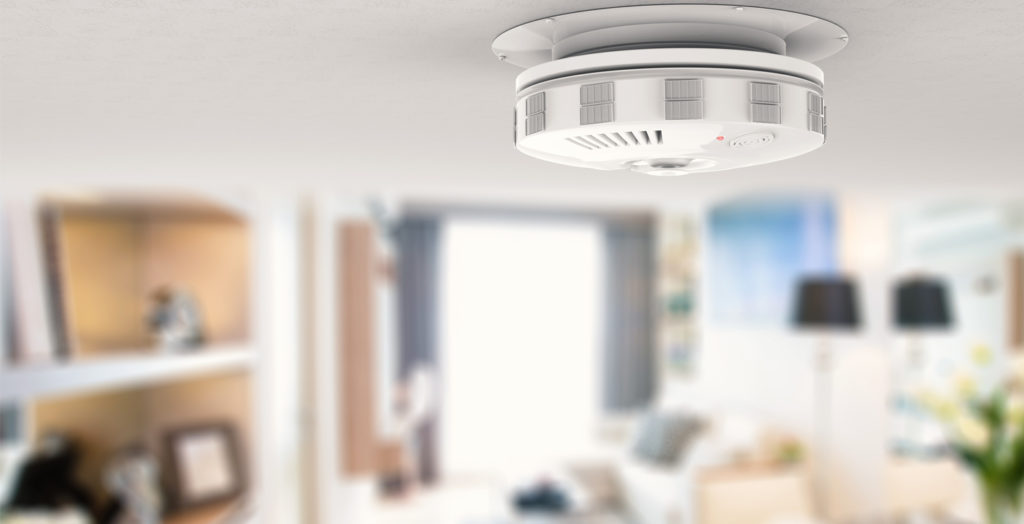If there’s a fire in your property and you haven’t met your obligations to keep your tenants safe, you could be in trouble. You could be fined or even spend time in prison.
A fire risk assessment isn’t essential when renting to a family or sharers. However, it is required if you are operating a house with multiple occupants, also known as a HMO. A fire risk assessment is also required for the common parts of flats if you own a share of a freehold or where residents run the block.
Plan Insurance can accommodate your Property Owners & Landlord Insurance needs. Just fill in our short online quote form, and our professional brokers will be in contact to arrange your insurance.
The Rules For Alarms
You are legally required to fit at least one smoke alarm on every floor of your rental property. You must put a carbon monoxide alarm in any room with a solid-fuel burning appliance, like a coal fire or wood-burning stove. It is also strongly advised to install an alarm in any room with a gas appliance.
Make sure the alarms work on the first day of each new tenancy. After this, alarms should be tested monthly. With a mains-wired system in a HMO this is legally required, otherwise this responsibility can be left to tenants. Fire alarms need to be inspected annually by an electrician or a professional that can present a test certificate.
The London Fire Brigade recommends an extra heat detector in the kitchen, and a smoke alarm in the lounge and hallway of individual flats or houses. Higher standards apply in HMOs and blocks of flats.
Appliances and Furniture
By law, landlords must have gas appliances checked by a registered gas safe engineer once a year. In addition, inspections of electrical installations need to be conducted at least once every five years.
Gas and electrical certificates have to be given to tenants at the start of their tenancy or within 28 days of inspections taking place.
Furniture must carry fire resistance labels. For mattresses, divans and bed bases, items need to have a label referring to BS7177. The only exceptions are furniture made before 1950 or reupholstered furniture made before then.
Do I Need To Fit Fire Doors?
A fire door is a door that can hold back flames and smoke for at least 30 minutes, allowing people in the building to escape.
They are required for flat front doors that open onto shared areas.
How do you tell if a door is a fire door? They are heavy, usually at least 44mm thick and have a label on the top or side edge.
The London Fire Brigade says that fire doors should be self-closing. Landlords should tell tenants specifically not to prop them open. Make sure to have fire doors fitted by a specialist. Without the correct seals, hinges and fire-safe letterboxes, the doors will fail. Please check older fire doors are still fit for purpose.
In HMOs and buildings converted to flats, landlords must fit internal doors and the final exit door from the building with locks or catches that can be opened from inside without a key. Locks on fire doors usually have a thumb turn on the inside that prevents residents from becoming trapped.
Rules About Fire-Extinguishers
Landlords should put a simple, multipurpose fire extinguisher on each floor of the common parts in a block of flats, and in the hallway of HMOs. Fire extinguishers should be serviced annually. Additionally, provide a fire blanket in the kitchen of properties of any type.
How Do I Know If A Building’s Walls Are ‘Fire Safe’?
To prove a block of flats is safe, property owners need an ‘external wall system’ (EWS1) certificate. Without this form, which can only be commissioned by the freeholder, banks will not provide mortgages.
The survey required for an EWS1 form checks that cladding, insulation, balconies and wall structures aren’t conducive to spreading fire. Ask your block’s managing agent or freeholder for the EWS1 form and the survey it is based on.
A big issue is that the majority of blocks of flats fail. When blocks are assigned the worst ratings of B2 or A3, leaseholders are liable for costs. These can be up to £75,000 per flat. Lenders sometimes require these forms even for three-storey blocks with no cladding.
Funding For Cladding
In blocks taller than 18m that qualify for £5 billion of government funds for recladding, buy-to-let investors are eligible for help unless they own a large number of flats. Where flats do not qualify for government funding, developers are sometimes forced to pay for the works under pressure from MPs or local councils.
Under the new Building Safety Bill, property owners have 15 years to claim compensation for dangerous cladding and poor workmanship. Right now, it stands at 6 years. However, the change will apply retrospectively, allowing owners of a building completed in 2010 (for example) to bring proceedings against developers until 2025.
Letting and property risk management can be involved, especially when overseeing services across a portfolio of sites. At Plan Insurance brokers we offer our landlords insurance and commercial property owner insurance clients free property risk management support as well as updates on the latest legislation. These risk management tools and informed guidance will help simplify the process.


